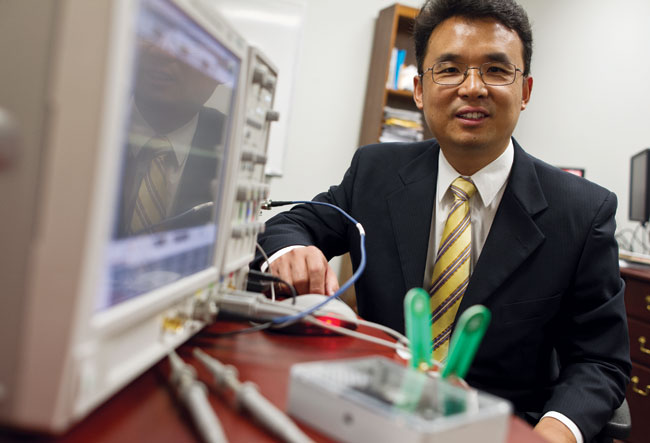S.O.S.
Building a Better Radar
Professor’s processing system could provide U.S. Navy and Marine Corps with more efficient radar and surveillance systems

Qilian Liang's signal processing system eliminates redundant data.
One UT Arlington electrical engineer is partnering with the U.S. Navy to do more with less.
Professor Qilian Liang was recently awarded a five-year, $797,500 grant by the Office of Naval
Research (ONR) to simplify data collection through an algorithmic system he
designed and is streamlining. The goal is to create a signal processing system
that provides better information for radar while collecting less data.
“When the Navy’s
radar looks at a specific area, it takes into account everything in that area,”
Dr. Liang explains. “Much of that data isn’t needed for the system to come to a
precise answer on what a radar system says is there. If you take in less data,
it takes the system less time to make an informed decision.”
The amount of time
and space saved depends on the sample size of whatever the Navy is asking the system
to evaluate. The redundant data is eliminated with co-prime and nested
samplings in time and spatial domains, which only keep a small subset of data.
(Co-prime signal processing is a new waveform sampling strategy that offers
simplified sensor array design, streamlined signal processing, and efficient
image formation techniques.)
“This project will
help to automate processes that provide small tactical units with more
efficient data processing,” Liang says.
He believes the
results from this research will potentially benefit different programs on Navy
and Marine Corps ships and planes; for example, besides helping make their
radars more efficient, it could improve the performance of sensor and
surveillance systems.
Liang’s grant was
funded by the ONR Basic Research Challenge program, which was established
to competitively select and fund promising research projects in new areas not
addressed by current programs. Its aim is to stimulate new, high-risk research
that fosters leading-edge science.

















